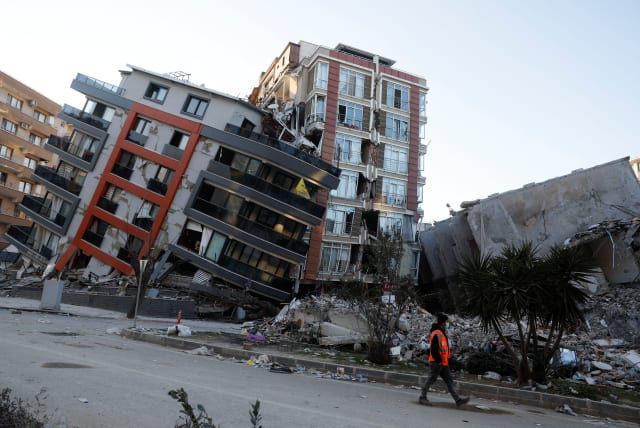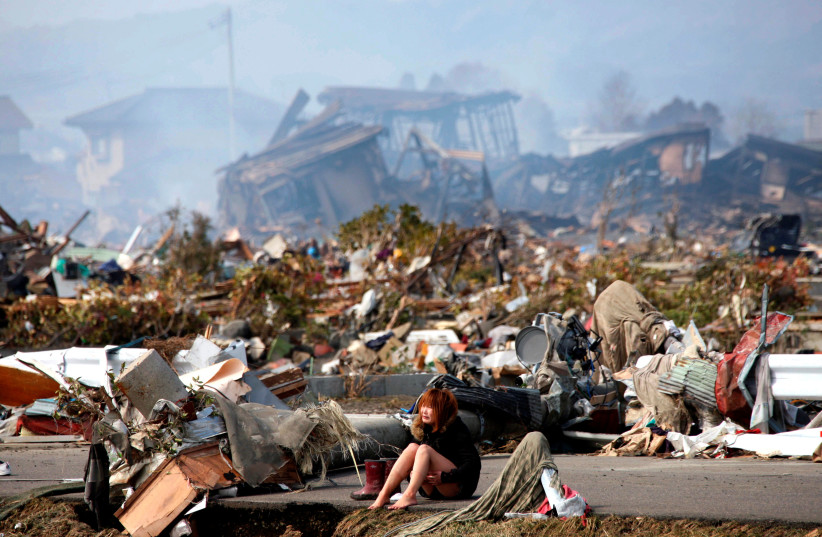Hasty rebuild could leave Turkey at risk of another quake disaster

Turkey's government is struggling to find a quick solution to rehome those who were left homeless after the quake, and rebuild what was destroyed. However, being speedy could be a bigger issue.
Turkish President Tayyip Erdogan's plan to rebuild quickly after devastating earthquakes rocked the country risks courting another disaster unless urban planning and building safety are carefully re-considered, architects and engineers say.
Days after Turkey's worst earthquake in modern history, Erdogan vowed to rebuild the southern disaster zone within a year, an undertaking conservative estimates put at $25 billion and others expect to be far higher.
Authorities say more than 380,000 units in 105,794 buildings are in urgent need of demolition or have collapsed, out of 2.5 million structures across the region.
A building boom has defined Erdogan's two-decade rule, during which his government has collected some $38 billion in quake-linked taxes, according to Reuters calculations. The tax, still in place, could provide quick financing to start rebuilding efforts.
Facing elections by June, Erdogan's government has endured a wave of criticism over both its response to the devastation and what many Turks say were years of policies that led to tens of thousands of buildings being so easily destroyed.
Erdogan had said the government would cover the rents of those who leave quake-hit cities. "We will rebuild these buildings within one year and hand them back to citizens," he said.
But experts believe he needs to carefully enforce seismic-safety standards and build safer structures in the area, which straddles one of three faultlines crisscrossing Turkey.
"It is not only necessary to replace the demolished buildings, but also to re-plan the cities based on scientific data such as not to build on faultlines and to learn lessons from past mistakes," said Esin Koymen, former head of Istanbul Chamber of Architects.
"The first priority is new planning, not a new building."
Over 1 million homeless
The quakes on Feb. 6, which also hit neighboring Syria, left more than a million homeless and killed far more than the latest official tally of 46,000 people in both countries.
They devastated southern Turkey in the dead of winter, with overnight temperatures near freezing, leaving many emergency tents inadequate for the homeless. More than 2 million others have evacuated the region that was home to more than 13 million.
The earthquakes revealed the fragility of Turkey's infrastructure, experts said, given they ravaged both modern and ancient buildings including hospitals, mosques, churches and schools.
Some now worry the government's ambitious timeframe leaves little time to fix past mistakes.
"When they say 'we start the construction in a month, we finish it in a year', without the city planning work, frankly, this means that the disaster we are experiencing has not been noticed," said Nusret Suna, deputy head of the Chamber of Civil Engineers.
"It takes months to make city plans ... it is very wrong to ignore those plans."
Urbanization Minister Murat Kurum said last week the government would consider detailed geological surveys in its city reconstruction plans, and that tenders would be held.
"Friendly companies"
The bill to rebuild houses, transmission lines, and infrastructure is around $25 billion, or 2.5% of GDP, U.S. bank JPMorgan said in a report. Another report from the business association Turkonfed estimated damages to housing at $70.8 billion.
And analysts say costs could overshoot initial estimates.
Over 20 years in power, Erdogan used major real estate projects to showcase Turkey's rising prosperity. Public and private builds have boosted jobs and new housing stock, and helped his opinion poll ratings.
The looming presidential and parliamentary elections, which could be delayed due to the quake, pose Erdogan's biggest political challenge to date given a cost-of-living crisis weighed heavily on Turks well before the disaster struck.
Some critics have said the state exacerbated the crisis by awarding "friendly" companies lucrative construction contracts over the years in return for political and financial support.
Pinar Giritlioglu, the Istanbul head of the Chamber of City Planners, said: "Unfortunately, the rentier system instead of science continues to rule everything."
The government has vowed to investigate anyone suspected of responsibility for the collapse of buildings and has arrested dozens of people so far.
Quake-proof buildings
Though there is no definite data on the more than 20 million buildings in the country, former Urbanisation Minister Mehmet Ozhaseki said when in office in mid-2018 that "probably more than 50% of all buildings" contravened housing regulations. The Urbanization Ministry did not immediately respond to questions about current figures.
Opposition politicians accuse Erdogan's government of failing to enforce building regulations, and of misspending special taxes levied after the last major earthquake in 1999 in order to make buildings more resistant to quakes.
Erdogan has repeatedly dismissed what he calls opposition lies meant to obstruct investment.
In 2018, the government issued an amnesty for existing buildings that had broken the construction rules - for a fee, a practice also carried out under previous governments before 1999.
While state housing agency TOKI built just 1 million quake-resilient houses over the past two decades, about 5% of buildings in Turkey, the private sector built slightly more than 2 million sturdy homes during the same period, according to Urbanisation Minister Kurum.
Jerusalem Post Store
`; document.getElementById("linkPremium").innerHTML = cont; var divWithLink = document.getElementById("premium-link"); if (divWithLink !== null && divWithLink !== 'undefined') { divWithLink.style.border = "solid 1px #cb0f3e"; divWithLink.style.textAlign = "center"; divWithLink.style.marginBottom = "15px"; divWithLink.style.marginTop = "15px"; divWithLink.style.width = "100%"; divWithLink.style.backgroundColor = "#122952"; divWithLink.style.color = "#ffffff"; divWithLink.style.lineHeight = "1.5"; } } (function (v, i) { });

